A flower that blooms in the winter months all the way to spring; hellebores are unique flowers that love the cold weather. These plants are naturally droopy, but there are variants of hellebores that grow upright flowers. We were curious about these plants as well, so we researched this topic to find the answers for you.
Most hellebores have flowers that droop during their flowering season, making it hard to appreciate the blooms unless you plant them on a slope. However, some variants like 'Jacob', 'Pink Frost', 'Cinnamon Snow', 'Spring Party', 'Christmas Roses', 'Snow Roses', 'Lenten Rose', and 'Wedding Party' have upward-facing flowers.
Choosing hellebore flowers that are upward-facing makes it easier for everyone to appreciate the beauty of these blooms. In this post, we'll talk about these upright-growing hellebore flowers. We'll also talk about how to care for hellebores, as well as tips on growing them to their full potential. Keep reading to learn more, and we hope you enjoy this post!
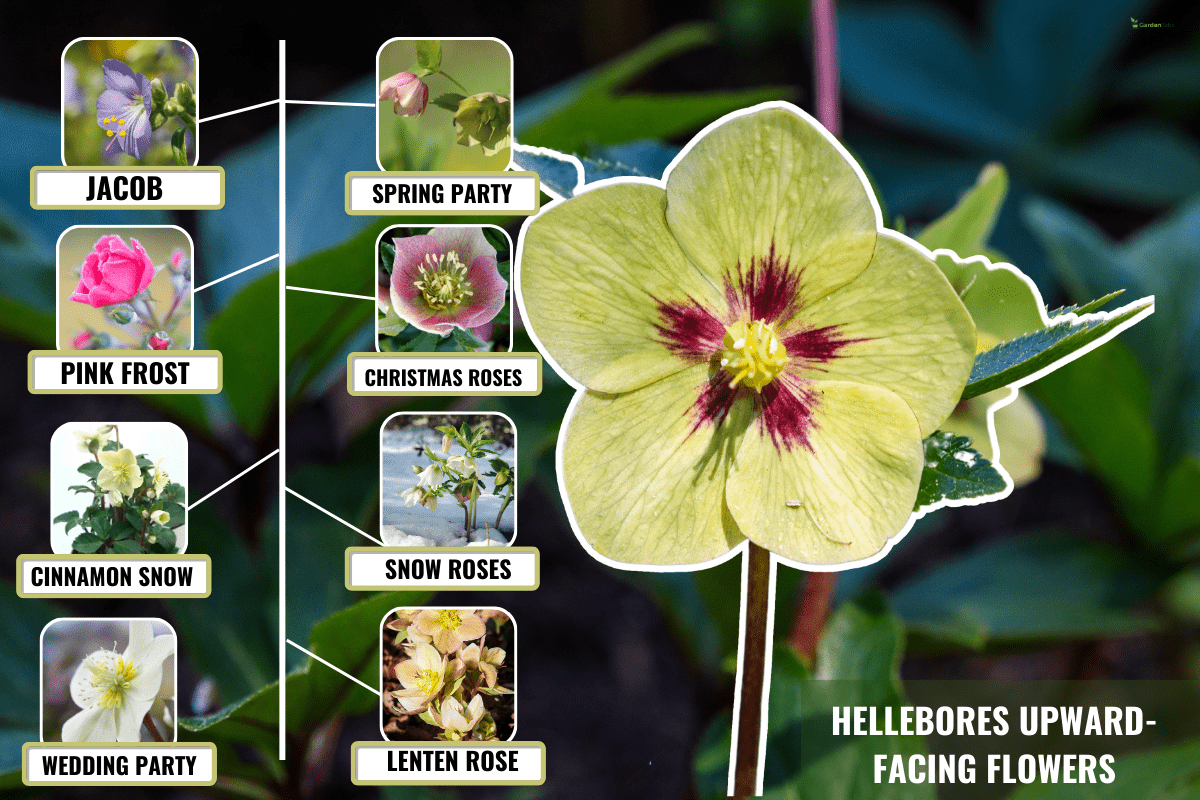
Which Hellebores Have Upright Flowers?
During the cold winter months, one would think that flowers are unlikely to boom in the frigid weather. The air and the ground it too cold for most plants, but not for this bright, hardy flower. Hellebores are winter-blooming perennials that bring color to an otherwise flat landscape.
These plants are typically woodland-edge plants. These plants do well in natural settings, but you can also plant them alongside early-spring flowering bulbs and evergreen ferns. They are also great as cut flowers, so you can harvest them for colorful blooms on your table during their season.
Most hellebore flowers droop downwards. This is their evolutionary protection against the elements as the flowers shield themselves from rain, snow, and the wind. Because of this, the blooms are usually angled toward the ground and they cannot be appreciated as much as we would want to. Some gardeners resort to planting them on a slope to see the beauty of the blooms better.
This is why there are newer variants and cultivars of hellebores that have upright flowers. These flowers look better in gardens because you will be able to see the flowers in full bloom and they don't need to be planted on higher ground.
There are quite a number of hellebore variants like 'Jacob', 'Pink Frost', 'Cinnamon Snow', 'Spring Party', 'Christmas Roses', 'Snow Roses', 'Lenten Rose', and 'Wedding Party' that grow face-up. More variants and cultivars are seen growing every year, so more hellebore enthusiasts will enjoy seeing these flowers with these new plants.
Some variants of Hellebore flowers
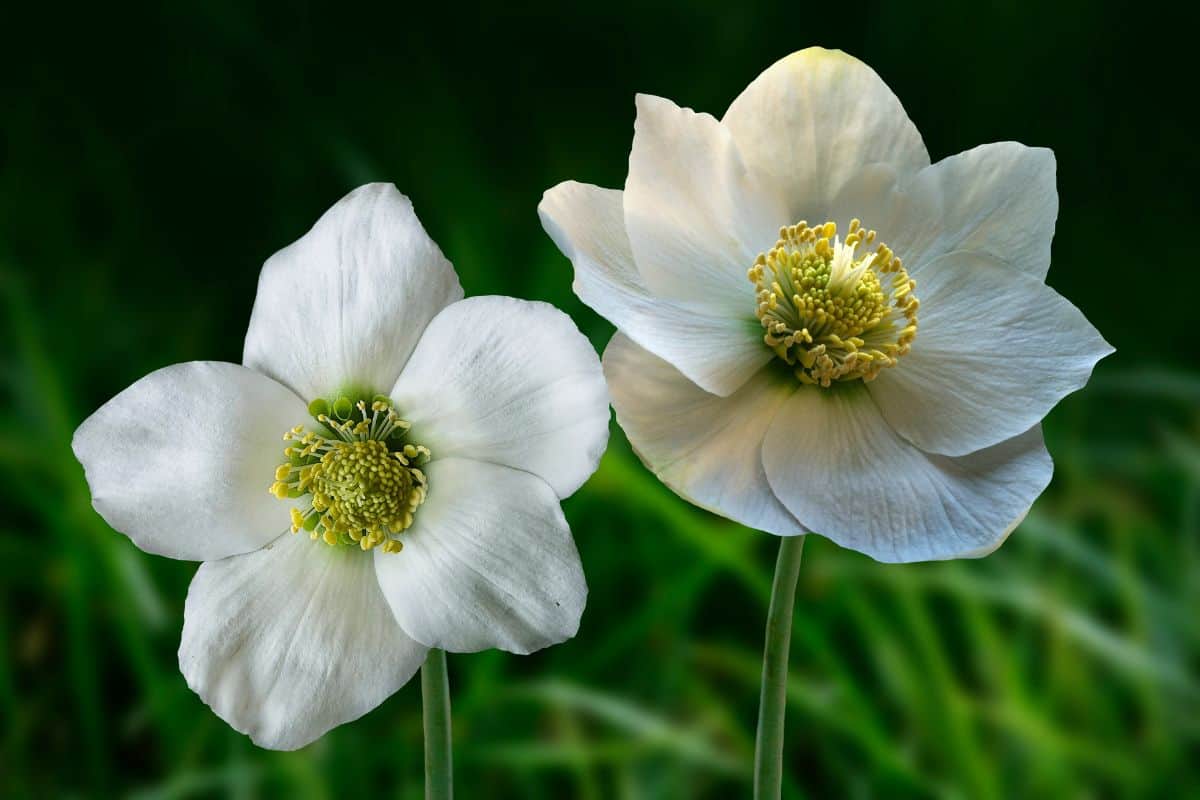
These hellebore flowers with upward-facing blooms grow similarly to their counterparts. However, unlike the older variants and cultivars, they also have a longer blooming season which allows people to enjoy the flowers longer.
- Christmas Roses - These hellebores grow with large white blooms that turn into light green or blush pink as the weather starts to cool. They bloom from fall to winter, which adds a little brightness to the otherwise cold weather, a perfect partner to the holiday season.
- Snow Roses - During winter to early spring, these pretty pink flowers add a touch of color to the cold winter season. Their cup-shaped flowers may be pink on the reverse, while others turn into a deeper mahogany shade.
- Wedding Party - For those who are planning for later blooms, these flowers will show off their flowers during early spring to late spring. These plants grow with double flowers in snow-white shades, or with edges lined with raspberry colors.
- Lenten Roses - For late winter to early spring, Lenten roses are perfect additions to your gardens. They come in a variety of colors, ranging from ivory to flushes of pink and green. Some variants have more varieties like pink, burgundy, or purple that you can enjoy.
- Cinnamon Rose - During December, these flowers add color to the holiday season. They come in marbled, pinkish-white flowers with yellow centers. There are variants that come in brighter pink shades, with a warmer peachy glow on some of the other petals.
Do All Hellebores Droop?
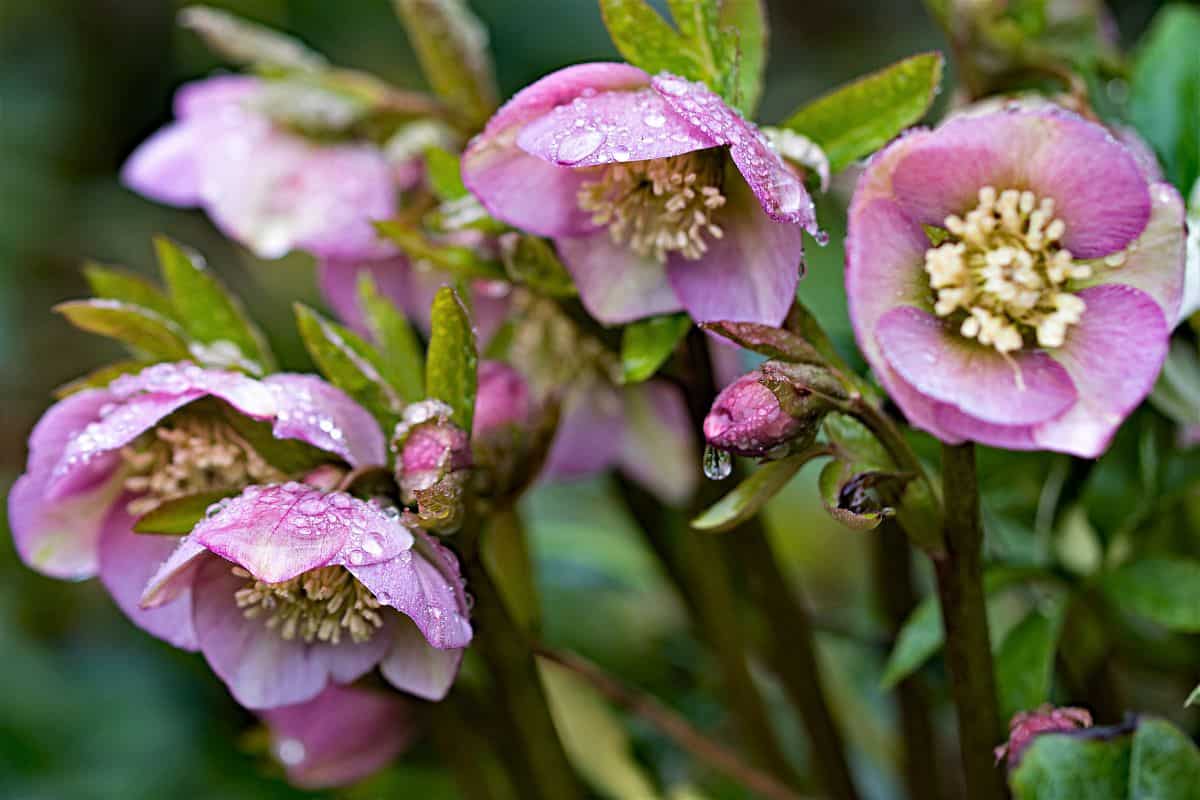
Generally speaking, hellebores droop because it is a survival mechanism against snow, sleet, and rain. The flowers tend to face the ground to keep the elements from ruining the pollen and the reproductive parts of the plant.
This is one of the reasons why a lot of gardeners often plant hellebores a little higher than most plants. It can be hard to appreciate the beauty of the flowers if they are facing the ground all the time. These plants are also quite short, so they need the extra height to be able to be appreciated well.
However, it's not only the elements that cause hellebores to droop. There are occasions when the flowers or the plant itself are droopy because of dryness. The lack of moisture in the soil often makes the plant droop lower because there isn't enough water for the plant. Although they are tolerant to drought, hellebores will often perk up when they get enough water.
Hellebore Planting Tips
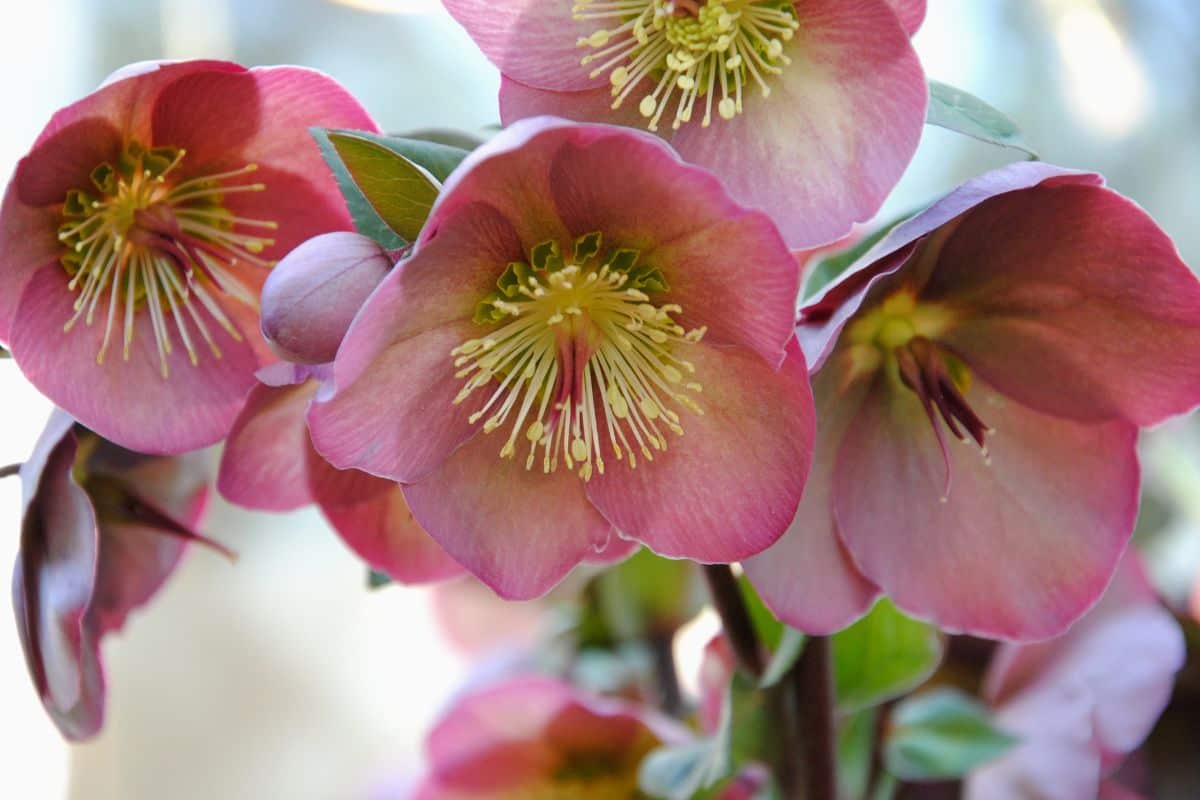
Some gardeners like to plant their hellebores as seeds, but you can also purchase them as seedlings. If you are replanting them from nursery containers. Free up any of the plants' bound roots so they have more room to grow once they are replanted to new pots.
Avoid planting hellebores too deep into the ground. Doing so will prevent good flower production, so the crown should just be planted right below the surface of the soil.
If you are planting the hellebores outdoors in the garden, remember that they can be toxic to young children and pets. Avoid putting them in areas where small children can have access to them. Do check this list of common poisonous plants for animals in your home.
How To Care For Hellebores
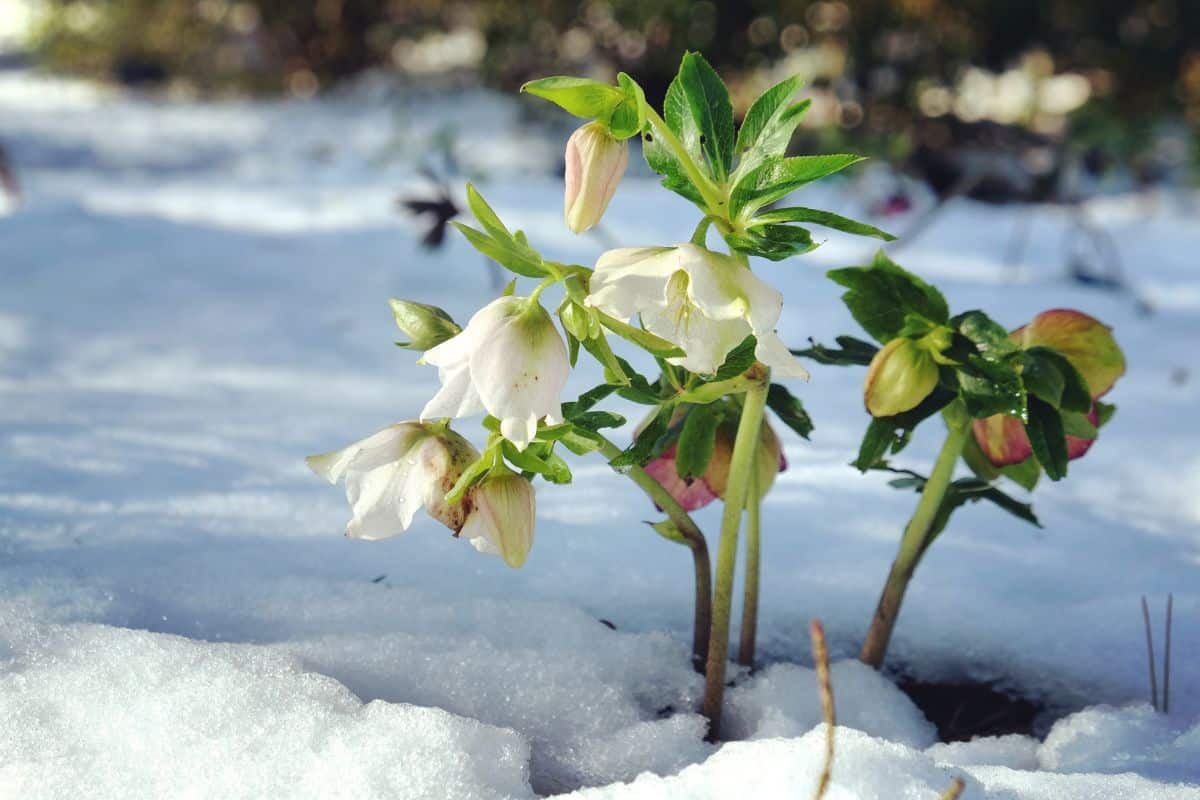
Caring for hellebores is pretty easy and they are undemanding for many gardeners. These flowers will do well on their own and they require little maintenance as the winter season moves forward.
When planting hellebores from seeds, make sure to place them in well-draining, organic soil. The plants should be in an area where the sun is filtered or there is enough shade so the hellebores are not exposed to direct sunlight. Hellebores do really well under dappled light, so the best place to plant them is under deciduous trees.
When the hellebores grow, the damaged leaves must be immediately removed, especially the older leaves. Cut the leathery leaves when the flowers and new foliage start to grow and emerge.
The hellebore flowers do not need to be deadheaded. However, some gardeners may argue that doing so can encourage healthier growth for the new flowers.
Hellebores also require careful fertilization. Try to put a balance on the fertilizer that you will use on the hellebores as too much nitrogen can make for great foliage but very little blooms.
To keep the soil and the roots healthy, mulch the plants yearly with organic compost or manure. Do not move hellebores because they tend to get stressed, so try to keep them in place once you have established them in their planting spots.
What Do You Do When Hellebores Finish Flowering?

Some people who plant hellebores are not sure of what to do with their plants once they finish flowering. Hellebores should be pruned during the late winter or early spring months.
Trim and remove the old leaves from the base by slicing them once the new growth appears. If the old foliage still looks healthy, you can leave them as it is. However, always check on your plants so the old and new foliage will not get entangled.
Slugs are not hellebore's friends. Remember to check nooks and crannies, as well as the underside of the leaves to see if slugs have been snacking on your plants. Remove them immediately to avoid poor growth for your plants.
Since hellebores are perennials, expect them to grow year after year, as long as they are maintained well annually.
Final Thoughts
Hellebores are beautiful flowers that take center stage during the winter. While most of the flowers droop when they bloom, there are newer varieties that now grow upright. If you are planning to plant hellebores for your garden, choose varieties and cultivars that grow the way you want them to grow and with the colors you wish to see.
Are you looking for more information about hellebores? We have some articles that might help you:
